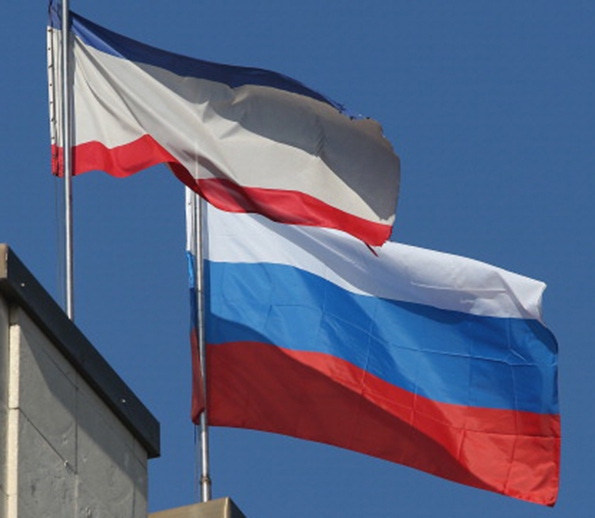January 11, 2016

Effective Jan. 1, Russia extended its food import embargo to include products from Ukraine. The embargo was first imposed in August 2014 on most food imports from the European Union, the United States, Canada, Australia and Norway, in response to economic sanctions imposed by those countries due to the ongoing conflict in Ukraine.
At that time, Canada was the pork-exporting country most impacted by the embargo, as Russia was the third-largest destination for Canadian pork. U.S. pork exports to Russia had been limited since early 2013 due to Russia’s policy on ractopamine use. A year later, Russia suspended pork imports from the EU due to outbreaks of African swine fever in EU member states Lithuania, Latvia and Poland. Russia remains closed to EU and U.S. pork today, due to these factors and the food import embargo.
So how will the extension of the import embargo to Ukraine affect pork trade in the region? Prior to the events noted above, the impact likely would have been minimal. But because Russia’s list of eligible pork suppliers has become limited over the past two to three years, Ukraine became Russia’s second-largest supplier after Brazil. Through October, Russia’s 2015 pork imports were down 21% year-over-year to 260,000 metric tons, but included strong growth from Brazil (189,394 mt, +41%), Ukraine (23,031 mt, up from 1,500 mt in 2014), and Chile (21,063 mt, +29%). As a result of this surge in trade with Russia, Ukraine’s total pork exports nearly tripled to 26,608 mt, with Vietnam, Hong Kong and Moldova being the other main destinations.
Ukraine pork picture
Ukraine started exporting notable volumes of pork in 2011, almost entirely bound for Russia. But Ukraine was a significant net importer of pork until 2015, primarily supplied by the EU and Brazil, with net imports reaching nearly 220,000 mt in 2012. With its economic and political crisis, Ukraine’s demand for imported pork plummeted. Imports in 2014 were just 53,753 mt, and fell even further in 2015 to about 30,000 mt. The reduction in imports entering Russia (minus 426,000 mt) and Ukraine (minus 147,000 mt) during this two-year period meant roughly 573,000 mt of pork ended up in alternative markets.
Russia’s suspension of pork imports from Ukraine further exacerbates a situation in which European pork has been exiting the region in unprecedented volumes. In 2014 – the first year in which it lost access to the Russian market – EU pork exports to Japan increased 35% year-over-year, while exports to South Korea and the Philippines nearly doubled, exports to Taiwan quadrupled, and exports to the United States and Australia increased more than 40%. The momentum for EU pork continued to build in many of these same markets in 2015, with exports increasing another 9% to Korea, 22% to Taiwan, 3% to the United States and 17% to Australia. But the big jump for EU pork in 2015 was in China, where exports (through October) surged 47% to more than 900,000 mt.
“China is the one major export destination that experienced a significant pork deficit in 2015, and the EU was in the best position to capitalize,” explains U.S. Meat Export Federation Economist Erin Borror. “Ample supplies of ractopamine-free, China-eligible product, fueled by low prices and a weak euro, helped further establish the EU as China’s dominant foreign pork supplier. This advantage could narrow in 2016, however, with several U.S. plants recently regaining eligibility for China.”
European Commission supporting prices
Worldwide, the EU’s estimated 2015 pork exports increased 7% year-over-year to 2.9 million mt, while export value declined 13% to $6.4 billion. EU hog prices remained under pressure throughout 2015, with late-December prices averaging $0.62 per pound, down 5% from 2014 and 18% below the five-year average. In an attempt to support prices, the European Commission implemented subsidies for private storage in March 2015, in order to defer pork sales and alleviate supply pressure.
The Commission is again attempting to support the market, with the next round of private storage aid for the EU pork industry taking effect Jan. 4. This round could have a greater impact because the subsidies are higher and pork lard (a key Russia item with limited alternative markets) has been added to the list of eligible products. The amount of aid varies by product, but it is 20% above the relatively low level offered in March 2015. Due to limited funds and a high level of interest within the EU industry, this round of aid is expected to be open for a short period of time.
The Commission expects EU pork production to grow by less than 1% in 2016, to 23.5 million mt, after increasing nearly 3% in 2015. But even with a more modest increase in production, the EU will remain a formidable competitor this year.
Data source: Global Trade Atlas (volumes include muscle cuts and variety meat, unless otherwise noted)
You May Also Like



